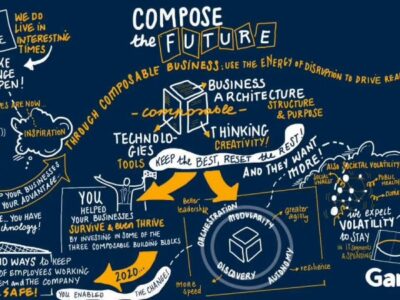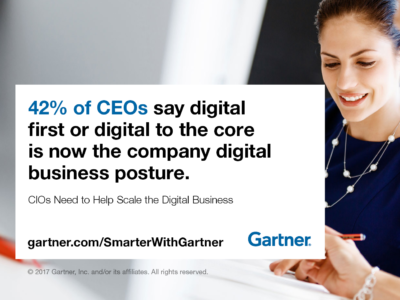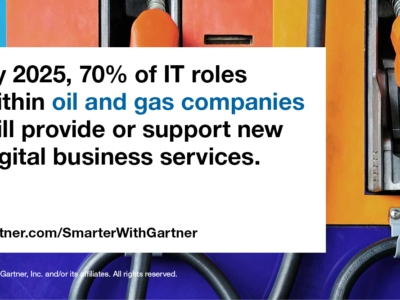Planning for a Digital Future – Gartner Symposium/ITxpo Q&A with Jamie Popkin
Digital business has pushed many companies into more risky decisions. Opportunities will arise to make the risk worth considering
Digital technologies are evolving at an unprecedented pace and will have a disruptive impact on enterprises. IT leaders will need to be prepared for what’s on the horizon by adapting their thinking, methods and technologies to support the fluidic change of the digital future.
How can IT leaders be prepared for the change ahead? To discuss this, we asked Jamie Popkin, vice president and distinguished analyst at Gartner, for advice on how CIOs can plan for the digital future.
Q: What technologies and trends do you see as the main drivers of the digital future?
A: Digital and autonomous machines are key drivers of the digital future. Everything has a digital connection or representation. Physical objects are now active participants in business interactions, and machines are beginning to operate in an autonomous mode that doesn’t require human intervention. This finally gets us to a point at which almost any virtual or real-world process can be altered with minimum overhead and setup time. For example, digital and autonomous machines enable us to virtually hail a taxi, or allow a warehousing robot to independently find a palette of goods, deliver it to a packer and simultaneously update inventory in real time.
In the digital future, every resource, asset or capability will be digitally accessible or changeable. The technologies now support the emergence of different types of business models, which depend increasingly on the technologies used. A bank can exist without machines or digital technologies. However, a crowdsourced lending network, or a worldwide digital currency interchange cannot exist without digitalization.
Q: What steps can CIOs take now to plan for the digital future?
A: For the agility and speed required to be more responsive to changes in business demands, IT needs to evolve how it manages internal and external resources. To further meet business demands, IT needs to become bimodal, keeping the enterprise operating while providing innovations to help the business appreciate the art of the possible.
Accomplishing all this requires a renovated IT core. A renovated core will be the foundation of future digitalization initiatives, especially those requiring more business openness and stronger links to the outside world of customers and services.
For the full intreview please visit Smarter With Gartner website.
Additional analysis will during the Gartner Symposium/ITxpo 2015 track “Plan for the Digital Future”.
Gartner Symposium/ITxpo is the world’s most important gathering of CIOs and other senior IT executives. IT executives rely on these events to gain insight into how their organizations can use IT to overcome business challenges and improve operational efficiency.
Upcoming dates and locations for Gartner Symposium/ITxpo 2015 include: November 8 – 12, Barcelona, Spain










